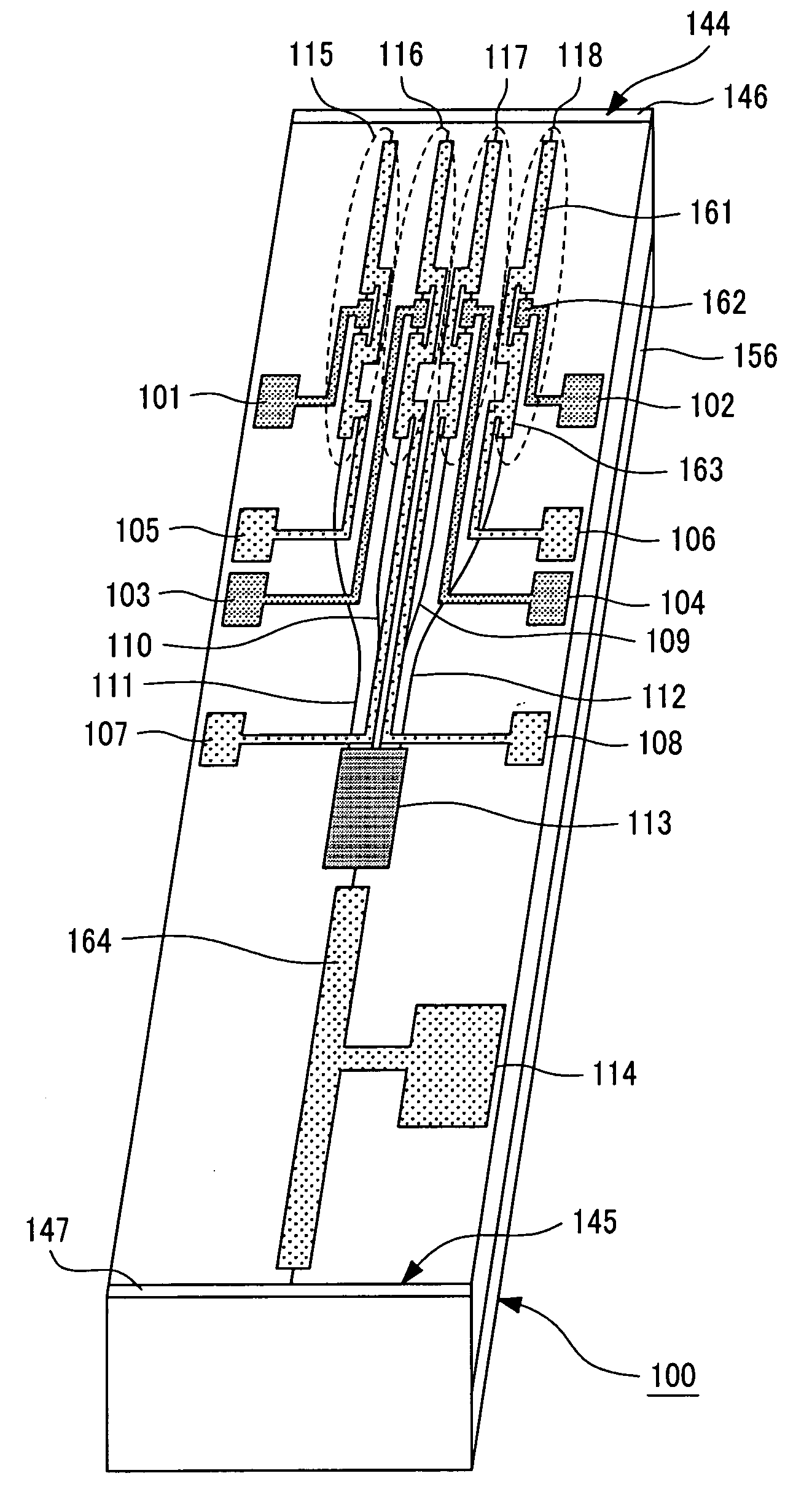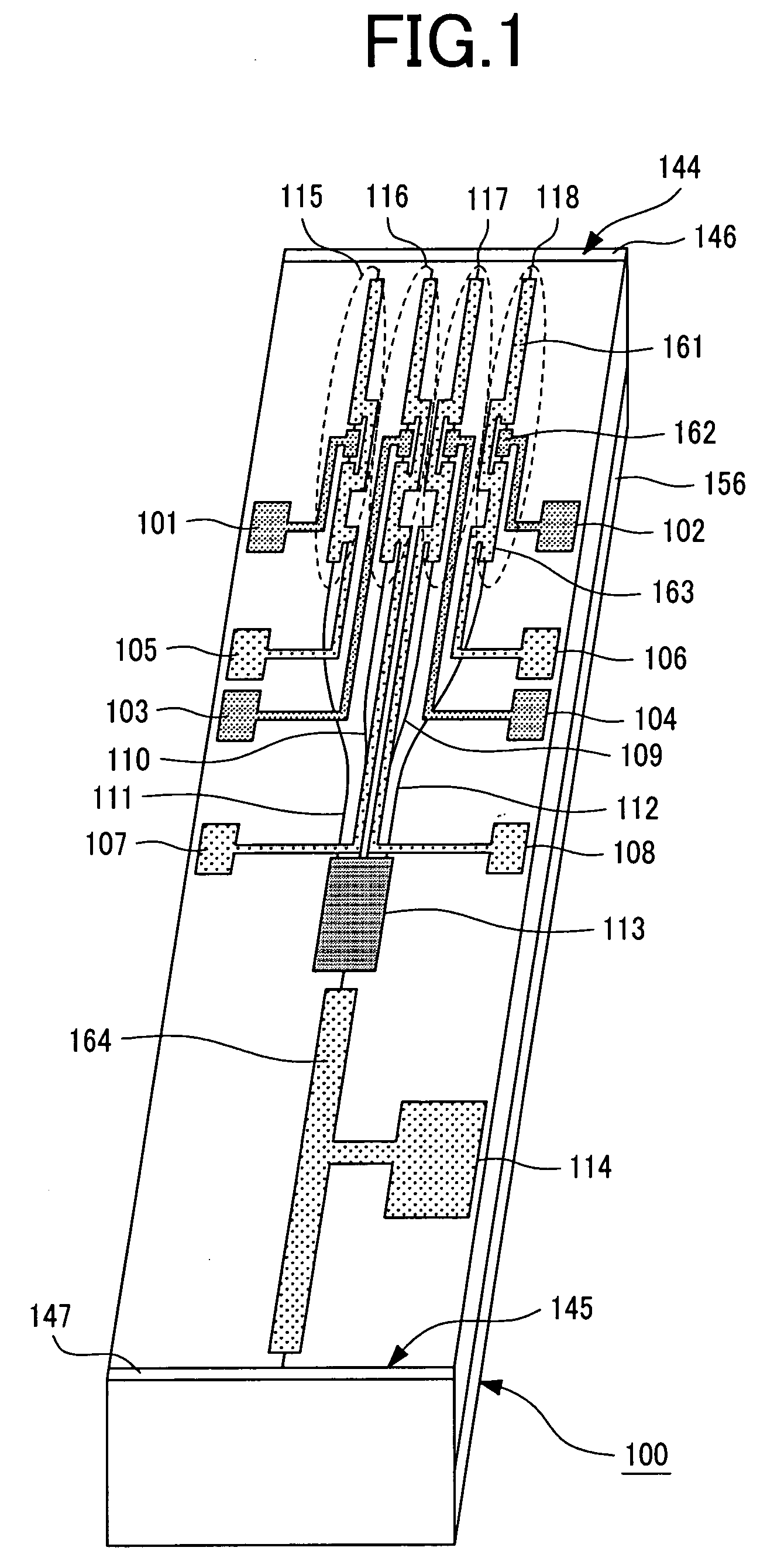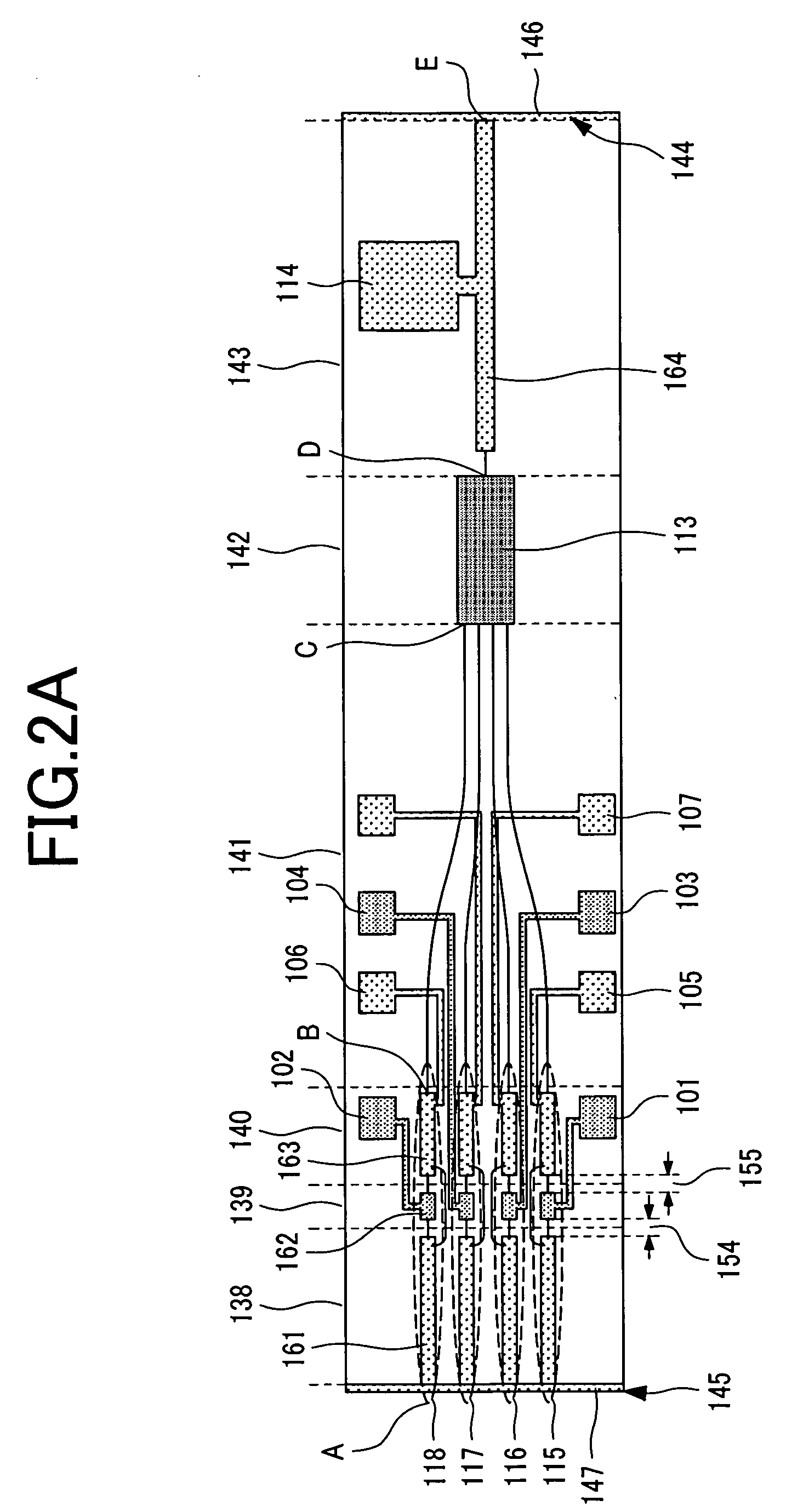Wavelength tunable semiconductor laser apparatus
a semiconductor laser and wavelength technology, applied in semiconductor lasers, electrical devices, laser details, etc., can solve the problems of difficult to achieve laser oscillation, difficult to ensure the long-term reliability of lasers in terms of wavelength, complicated control system, etc., and achieve the effect of increasing the distance lgr
- Summary
- Abstract
- Description
- Claims
- Application Information
AI Technical Summary
Benefits of technology
Problems solved by technology
Method used
Image
Examples
first embodiment
[0059] There will now be described an exemplary wavelength tunable semiconductor device whose oscillation wavelength can be varied by injecting a current into the refractive index control layer and selecting one of the DBR laser channels. This semiconductor laser device oscillates at wavelengths within the 1550 nm band. FIGS. 10, 11A, and 11B show the exemplary semiconductor laser device. FIG. 10 is a perspective view; FIG. 11A is a top view; and FIG. 11B is a cross-sectional view taken along line F-G-H-I-J of FIG. 11A. Specifically, like FIG. 2B above (showing a cross section taken along line A-B-C-D-E), FIG. 11B shows a cross section taken along an optical path that passes through the semiconductor laser portion (shown in the upper left of the figure), the gate region, an optical waveguide, the optical combiner for combining the light waves from a plurality of optical waveguides, and the semiconductor optical amplifier. The channel DBR laser array, the MMI combiner, and the SOA ar...
second embodiment
[0069] With reference to FIGS. 13A and 13B, there will now be described another exemplary wavelength tunable semiconductor device for the 1550 nm band whose oscillation wavelength can be varied by injecting a current into the refractive index control layer and selecting one of the DBR laser channels. FIG. 13A is a top view of the device and FIG. 13B is a cross-sectional view taken along line F-G-H-I-J of FIG. 13A.
[0070] The second embodiment is different from the first embodiment in that the laser device of the second embodiment does not include the rear DBR region 138 but instead includes a high reflective film 201 formed on a semiconductor end face. All other components are basically similar to those described with reference to the first embodiment. It should be noted that eliminating the rear DBR region 138 allows the DBR current to be reduced to approximately half. The symbol Lgrt1 denotes the distance between the high reflective film 201 of the DBR laser channel ch1 (or 115) a...
third embodiment
[0073]FIG. 15 shows the wavelength characteristics of a laser device adapted to generate a wavelength grid having a fixed pitch ΔλGRID. The dimensions of the device and its manufacturing method were the same as those of the first embodiment. The basic structure of the device is similar to that shown in FIGS. 10, 11A, and 11B.
[0074] The following description will be directed primarily to the laser channels ch1 and ch2. In order to allow the channels ch1 and ch2 to achieve a grid pitch ΔλGRID of 0.8 nm and alternately cover two wavelength grid elements at a time, these channels were formed such that: Lgrt1=105 μm; Lgrt2=105.119 μm; Λ1=Λ2=0.238 μm; and κ1=κ2=κ3=κ4 =90 cm−1. As a result, even though there are wavelength ranges that were not covered by either of the two channels, these channels alternately covered two wavelength grid elements at a time, and the resultant wavelength grid included 16 grid elements (from 1540.6 nm to 1552.6 nm).
[0075] There will now be described how to de...
PUM
 Login to View More
Login to View More Abstract
Description
Claims
Application Information
 Login to View More
Login to View More - R&D
- Intellectual Property
- Life Sciences
- Materials
- Tech Scout
- Unparalleled Data Quality
- Higher Quality Content
- 60% Fewer Hallucinations
Browse by: Latest US Patents, China's latest patents, Technical Efficacy Thesaurus, Application Domain, Technology Topic, Popular Technical Reports.
© 2025 PatSnap. All rights reserved.Legal|Privacy policy|Modern Slavery Act Transparency Statement|Sitemap|About US| Contact US: help@patsnap.com



